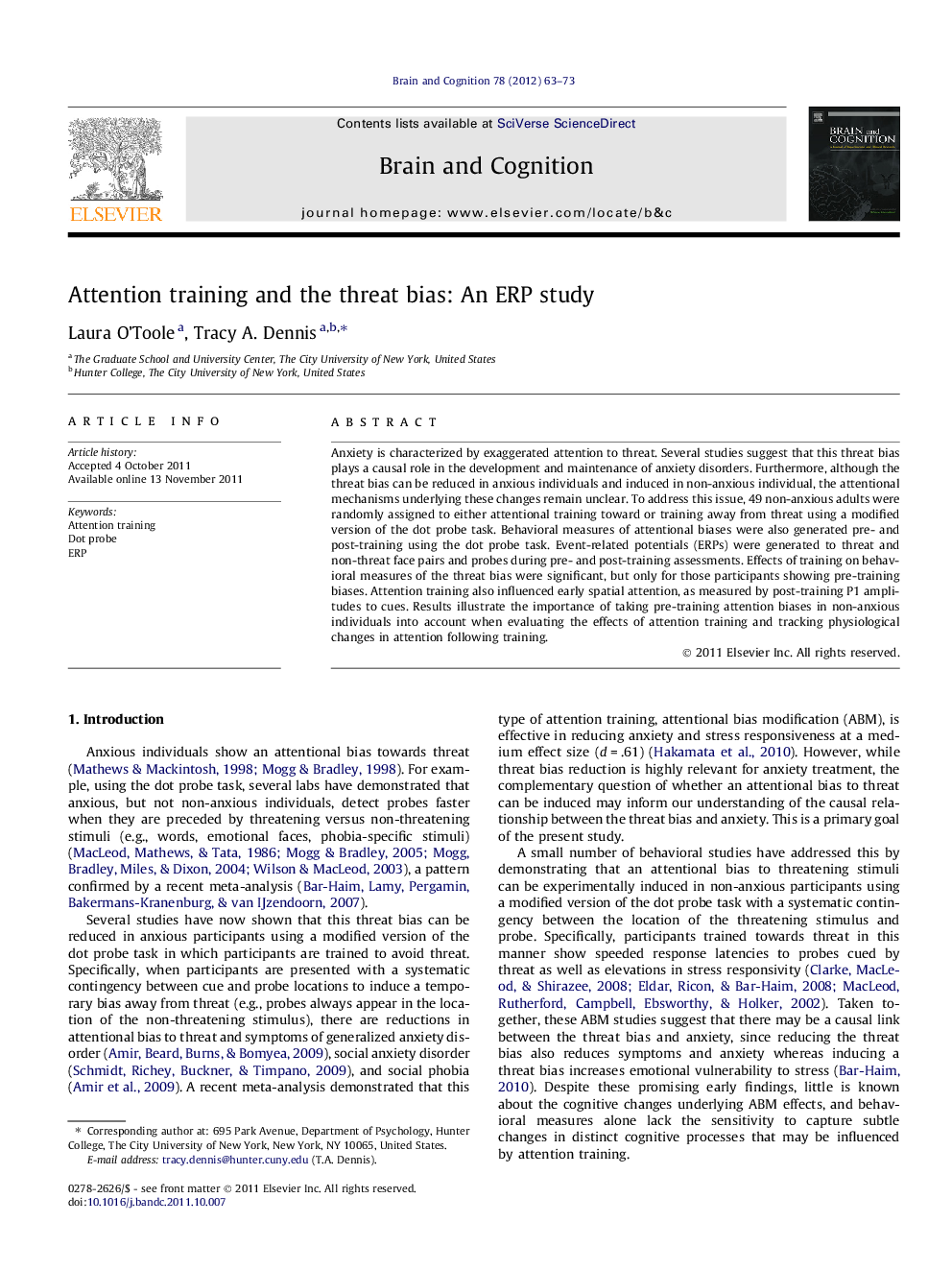| کد مقاله | کد نشریه | سال انتشار | مقاله انگلیسی | نسخه تمام متن |
|---|---|---|---|---|
| 924704 | 921259 | 2012 | 11 صفحه PDF | دانلود رایگان |

Anxiety is characterized by exaggerated attention to threat. Several studies suggest that this threat bias plays a causal role in the development and maintenance of anxiety disorders. Furthermore, although the threat bias can be reduced in anxious individuals and induced in non-anxious individual, the attentional mechanisms underlying these changes remain unclear. To address this issue, 49 non-anxious adults were randomly assigned to either attentional training toward or training away from threat using a modified version of the dot probe task. Behavioral measures of attentional biases were also generated pre- and post-training using the dot probe task. Event-related potentials (ERPs) were generated to threat and non-threat face pairs and probes during pre- and post-training assessments. Effects of training on behavioral measures of the threat bias were significant, but only for those participants showing pre-training biases. Attention training also influenced early spatial attention, as measured by post-training P1 amplitudes to cues. Results illustrate the importance of taking pre-training attention biases in non-anxious individuals into account when evaluating the effects of attention training and tracking physiological changes in attention following training.
► Behavioral effects of attention training depend on pre-training biases.
► Early spatial attention to emotional stimuli is affected by attention training.
► Physiological changes in attention are associated with behavior after training.
Journal: Brain and Cognition - Volume 78, Issue 1, February 2012, Pages 63–73